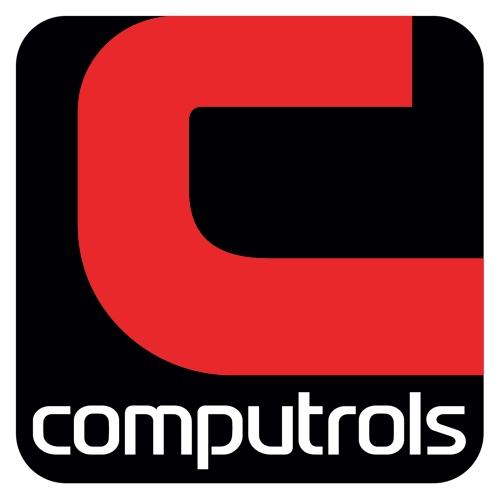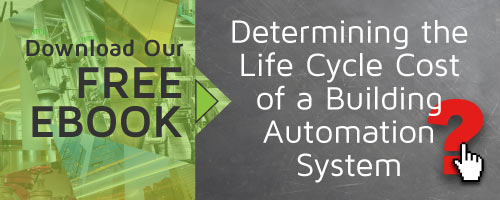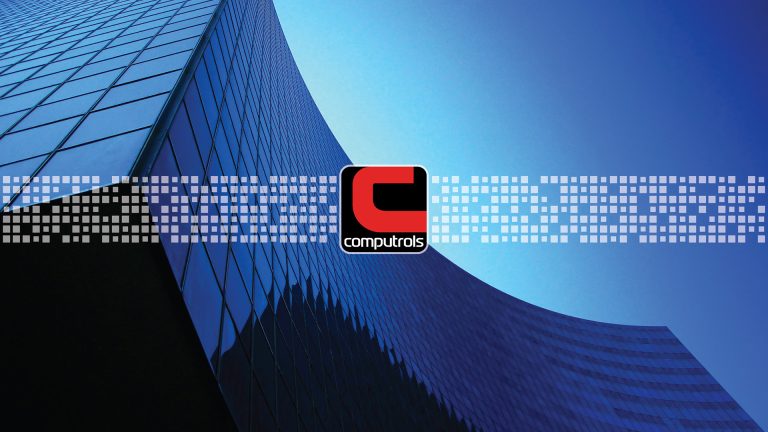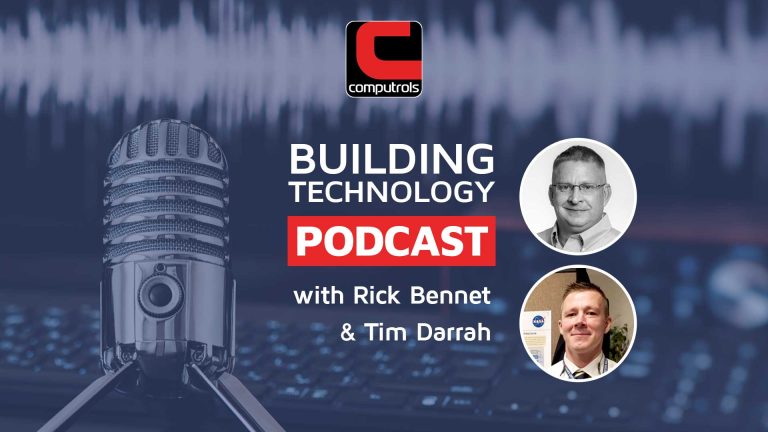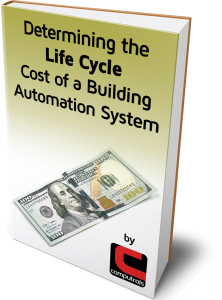CFOs, Building Automation and the Search for Lower Utility Costs
Did you know that heating and cooling accounts for nearly half of the total energy usage in a residential home? According to the U.S. Department of Energy (DOE) the exact number is 48%, and although you may not know the precise extent of your heating, ventilation and air conditioning (HVAC) energy usage, I’m sure you are cognizant of your monthly energy bill.

If you’re like me, you check the thermostat often to ensure that your home’s temperature setpoint is reasonable. Perhaps you adjust your thermostat before leaving the house for work to reduce your energy usage, or maybe you open windows during a nice day to avoid running your HVAC system. Regardless, when nearly 50% of your home’s energy usage is attributed to the HVAC system, it makes sense financially to understand how that system works in order to maximize comfort in a cost-effective way. Considering our residential energy usage and its associated costs, shouldn’t we have a similar level of awareness and concern for HVAC energy usage at the office? If you’re a CFO, you certainly should.
A CFO’s responsibilities encompass a number of duties from financial planning to operations to risk management, but it’s safe to say that ensuring the company’s financial health and well being is the top priority. There are numerous factors across multiple departments that comprise an organization’s overall financial health, so it’s no surprise that most CFOs and C-level executives are unaware of how much money they can save on utilities with the right building automation system (BAS). The operative word there is “right” BAS because a poor BAS design, installation, or service agreement can still 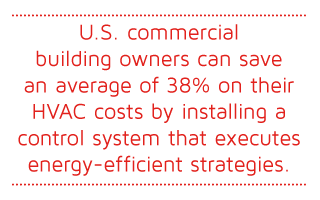 squander energy in spite of sharp graphics and innovative hardware. So if you’re a CFO or decision maker, how do you know which BAS is right for your facility?
squander energy in spite of sharp graphics and innovative hardware. So if you’re a CFO or decision maker, how do you know which BAS is right for your facility?
The DOE states that nearly 20% of a commercial office building’s total costs are energy-related, and roughly 40% of those costs are directly associated with the building’s HVAC. According to this 2012 DOE study, U.S. commercial building owners can save an average of 38% on their HVAC costs by installing a control system that executes energy-efficient strategies. As many chief engineers will tell you, every building is unique. Knowing this, selecting the right BAS is contingent on your building’s individual factors and takes a certain amount of due diligence.
Here are a few tips to help CFOs in their search for a truly energy-efficient BAS:
Consider the Software
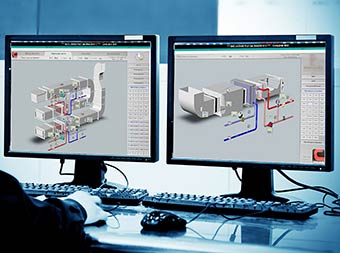 A BAS primarily consists of controllers, sensors, wiring, network infrastructure and software. While all BAS providers offer different solutions that encompass the items mentioned above, perhaps the greatest degree of difference in those solutions lies in the software. Often, BAS software is sold to end users with limited access. Limited access means that your facility manager and maintenance staff cannot fully manipulate the system at their discretion. Your BAS provider may be over complicating the user interface or holding onto more advanced levels of system access in order to sell you a maintenance agreement, or generate time and material tickets where a company representative needs to visit your building to implement a new sequence of operation or install a system update. That’s just scratching the surface. Additionally, maintenance agreements, time and material tickets, and annual software updates can add tens of thousands of dollars to your annual operating budget.
A BAS primarily consists of controllers, sensors, wiring, network infrastructure and software. While all BAS providers offer different solutions that encompass the items mentioned above, perhaps the greatest degree of difference in those solutions lies in the software. Often, BAS software is sold to end users with limited access. Limited access means that your facility manager and maintenance staff cannot fully manipulate the system at their discretion. Your BAS provider may be over complicating the user interface or holding onto more advanced levels of system access in order to sell you a maintenance agreement, or generate time and material tickets where a company representative needs to visit your building to implement a new sequence of operation or install a system update. That’s just scratching the surface. Additionally, maintenance agreements, time and material tickets, and annual software updates can add tens of thousands of dollars to your annual operating budget.
Consider the Hardware
Another critical aspect of your BAS is the hardware, and more specifically, the controllers. Like software, not all BAS controllers are created equal. While all BAS providers will offer smart controllers with input/output capabilities, network connectivity, security features and memory, the quality of the controllers will vary.
The building automation industry has been plagued with companies that provide controllers that are designed to be replaced. By providing controllers that are obsoleted after a few years of use, the BAS provider ensures that recurring revenue will be available at each site. If a product has a 10 year life cycle and you purchase it in year 7, this means you’ll only have the product for 3 years before it is deemed obsolete by the manufacturer. This model results in an attractive initial price on paper, so it’s easy to be swayed by a low bid for the initial installation. CFOs need to ensure that their property management staff is asking the right questions about the hardware being installed. How long are the controllers under warranty? What is the average lifecycle of your products? What’s the cost to upgrade to the latest and greatest technology? What kind of new products do you have on the horizon? These are a couple of questions that can help CFOs avoid costly replacements and upgrades in the subsequent years.
Consider the Hidden Costs
 As the CFO, your BAS considerations don’t stop with the initial install. As we alluded to in the previous sections, the initial installation price can be attractive due to a business model designed for recurring revenue through software upgrades, hardware obsolescence and ongoing service. Maintenance agreements are a hidden cost that all financial decision makers should consider. While all companies offer intelligent systems, these systems need to be maintained to ensure optimal system performance. For most BAS providers, ensuring system performance is accomplished through structured maintenance agreements. These agreements will consist of a certain amount of agreed-upon hours for service technicians to visit your facility, and depending on the size and complexity of your facility, these maintenance agreements can be tens of thousands of dollars annually. For a CFO, asking the right questions upfront can uncover a lot of these hidden costs and eliminate budgeting issues down the line.
As the CFO, your BAS considerations don’t stop with the initial install. As we alluded to in the previous sections, the initial installation price can be attractive due to a business model designed for recurring revenue through software upgrades, hardware obsolescence and ongoing service. Maintenance agreements are a hidden cost that all financial decision makers should consider. While all companies offer intelligent systems, these systems need to be maintained to ensure optimal system performance. For most BAS providers, ensuring system performance is accomplished through structured maintenance agreements. These agreements will consist of a certain amount of agreed-upon hours for service technicians to visit your facility, and depending on the size and complexity of your facility, these maintenance agreements can be tens of thousands of dollars annually. For a CFO, asking the right questions upfront can uncover a lot of these hidden costs and eliminate budgeting issues down the line.
Consider Computrols
At Computrols, we pride ourselves on eliminating the issues that permeate our industry and give CFOs nightmares. Our software is all-inclusive, meaning that all levels of access are granted to the end user upon the initial installation. We also have the ability to scale back access for certain users (CBAS Manual – Ch. 5, Section 1). For example, you would likely want your security team to control access but not the HVAC portion of your BAS.
 Our hardware carries the industry’s only lifetime warranty, meaning that we repair or replace controllers that fail under normal working conditions at no expense to the owner. Additionally, all of our controllers are built with backward compatibility, meaning our newest technology works cohesively with our oldest technology.
Our hardware carries the industry’s only lifetime warranty, meaning that we repair or replace controllers that fail under normal working conditions at no expense to the owner. Additionally, all of our controllers are built with backward compatibility, meaning our newest technology works cohesively with our oldest technology.
Maintenance agreements are completely up to the owner. The intuitive nature of our software and reliability of our hardware ensures that most buildings can operate autonomously without the need for ongoing maintenance. We are also able to tailor our agreements to meet the financial and service needs of each customer.
Our technicians are second to none. Computrols’ beginnings as a service company is what continues to drive our unmatched level of customer service. Just like any new business relationship, you need to know who you are going to be working with. You will be working with these people on a regular basis for at least the next 5 to 10 years. Make sure they have your best interest at heart and are experienced enough to help you effectively manage your BAS.
 When you work with Computrols, the buck stops with us. Your opinions and feedback are taken back to our engineering and manufacturing teams and often included in the next rev of hardware or software. Having recurring issues that cannot be solved by a local technician? We’ll put you in touch with the individual who created the product itself. That is the kind of service Computrols provides that you won’t find anywhere else.
When you work with Computrols, the buck stops with us. Your opinions and feedback are taken back to our engineering and manufacturing teams and often included in the next rev of hardware or software. Having recurring issues that cannot be solved by a local technician? We’ll put you in touch with the individual who created the product itself. That is the kind of service Computrols provides that you won’t find anywhere else.
Conclusion
Understanding the importance of an energy-efficient BAS is critical to significantly cutting down utility costs and maximizing profit. However, the myriad of BAS providers and solutions can make selecting the right system cumbersome, and for busy CFOs, making time to properly compare apples to apples can be difficult.
If you’re a CFO or financial decision maker that’s in the market for a new BAS, ensure that you are doing your due diligence when vetting different solutions. Visit computrols.com to learn more about our solutions and how we separate ourselves from the competition.
